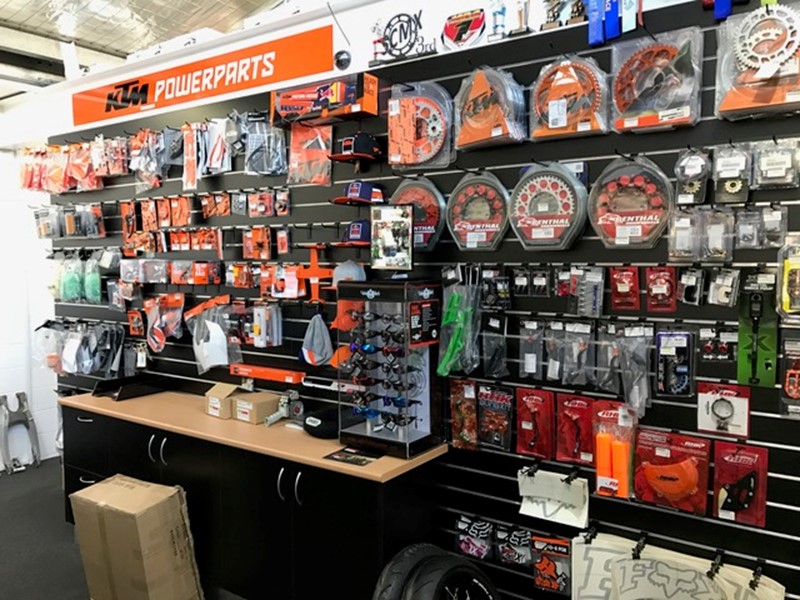Find Competitive Rates on Motocross Parts NZ for every single Bike
Wiki Article
Grasping Bike Gears: How to Optimize Your Riding Experience
In the world of motorcycling, understanding the art of equipment control is vital for improving your riding performance. Properly making use of and comprehending motorbike gears can significantly influence control, velocity, and fuel effectiveness, transforming an average ride right into a smooth, electrifying trip. By including specific change timing and adapting equipment option to different roadway conditions, motorcyclists can make certain optimal engine performance and security. The nuances of clutch control, throttle coordination, and equipment technicians bid a much deeper exploration, promising to open the full potential of your equipment. Exactly how can these techniques be used to really optimize your riding experience?Recognizing Gear Mechanics
Exactly how do the complexities of gear mechanics affect motorbike efficiency? At the core of motorbike dynamics, equipment technicians play a pivotal duty in transforming engine power right into motion, inevitably determining rate and control. Gears, diligently crafted components, permit motorcyclists to maximize torque and rate, making sure a seamless shift through various surfaces and velocities. The gear proportions, meticulously made, figure out the relationship between engine changes and wheel turns, influencing velocity and fuel efficiency.
Comprehending gear auto mechanics starts with recognizing the importance of the gearbox, which houses multiple equipments of differing dimensions. These equipments communicate via a process recognized as meshing, where teeth of different gears involve to transmit power.
Additionally, the concept of gear moving is essential to making the most of performance. Smooth and timely changes guarantee that the engine operates within its optimal power band, stopping unnecessary pressure and boosting long life (mx parts nz). By understanding these mechanical details, motorcyclists can achieve an unified blend of effectiveness, power, and control, boosting their riding experience
Timing Your Changes
Shift timing proficiency is vital for optimizing bike efficiency and boosting the riding experience. Properly timed shifts guarantee that the engine operates within its ideal power band, which is vital for keeping control, attaining smooth velocity, and ensuring the longevity of the motorcycle. Bikers need to establish an instinctive feeling of when to change equipments, which entails comprehending the connection between engine transformations per minute (RPM) and speed.To grasp shift timing, pay very close attention to the engine's sound and feel, as these provide essential ideas concerning when to transform equipments. When the engine approaches the upper range of its power band without reaching the redline, the ideal shift point typically occurs - motorbike shop. Moving prematurely can lead to a lack of power, while changing far too late might create unnecessary engine strain
Additionally, roadway conditions and riding style impact shift timing. In contrast, throughout highway riding, less changes at greater speeds can be extra suitable.
Enhancing Gas Effectiveness
While mastering motorcycle equipments is important for efficiency, improving gas efficiency is just as crucial for both ecological and financial factors. Optimal fuel intake not just reduces operational expenses yet also reduces the eco-friendly impact of riding. To achieve this, one should recognize the intricate relationship between equipment option and engine efficiency.Riding in a greater gear at lower speeds can lead to engine lugging, which is harmful to both fuel economy and engine health. Conversely, riding in reduced equipments at high speeds results in unneeded fuel intake.
Additionally, routine maintenance plays an essential duty in gas performance. Making certain that the motorbike is well-tuned, with tidy air filters and effectively blew up tires, can reduce and improve aerodynamics gas wastage. Furthermore, embracing a riding style that embraces progressive acceleration and smooth deceleration can contribute to much better fuel economic situation.

Strategies for Smooth Transitions
Achieving smooth equipment shifts is essential to boosting the riding experience and guaranteeing the longevity of a bike's transmission system. Appropriate gear changing not just adds to a seamless ride yet additionally minimizes damage on the mechanical elements. To grasp the art of smooth shifts, riders have to focus on a couple of vital techniques.
Second of all, clutch control plays an essential function. Involving and disengaging the clutch smoothly needs practice. The clutch bar must be released gradually, enabling a smooth transfer of power from the engine to the wheels without triggering a jolt or abrupt activity.

look at here now
Adjusting to Road Conditions
Browsing varied roadway conditions is a vital skill for any kind of motorcyclist intending to preserve control and safety. Whether you're riding on wet surface areas, gravel roadways, or browsing sharp turns, your capacity to adjust your gear use and riding strategy is vital. Understanding exactly how to readjust your equipments suitably can significantly influence grip and stability, guaranteeing a more secure journey.On damp roads, it is a good idea to maintain greater equipments to lower torque and reduce wheel spin. This approach aids keep grasp on slippery surface areas, permitting for smoother acceleration and deceleration. On the other hand, when riding on gravel or uneven terrain, lower equipments are more effective. Reduced equipments provide much better control and allow you to react more swiftly to unforeseen changes in the road surface area.
Sharp curves demand precise equipment administration to stabilize rate and control. Downshifting prior to going into a contour can help preserve energy while making sure the motorcycle continues to be stable throughout the turn. Constant practice in different conditions boosts your ability to respond and predict to adjustments in road structure and slope.
Final Thought
Grasping bike gears significantly improves the riding experience by enhancing acceleration, gas, and control efficiency. A thorough understanding of gear mechanics and precise change timing ensures the engine runs within its ideal power band, while smooth changes via effective clutch and throttle control rise convenience and performance. Adjusting equipment selection to numerous road conditions, such as utilizing greater equipments on damp surfaces and reduced gears on gravel, more boosts handling and safety. Inevitably, these abilities boost the general journey.Recognizing equipment technicians starts with recognizing the relevance of the gearbox, which houses several equipments of differing dimensions. These equipments interact through a process known as Look At This meshing, where teeth of various gears engage to transfer power (motocross gear). Mild changes to the throttle throughout gear changes can prevent jerky activities and maintain a constant riding speed
Whether you're riding on damp surface areas, gravel roads, or browsing sharp turns, your ability to adjust your equipment use and riding method is extremely important. Adjusting equipment selection to various roadway problems, such as using greater gears on wet more information surfaces and lower equipments on gravel, additional improves handling and safety.
Report this wiki page